Malvern Roundhouse
Hot Springs Railroad
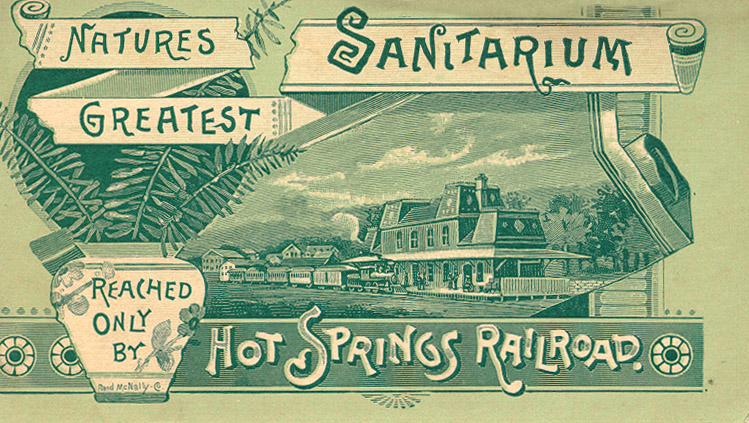
Malvern Roundhouse History
by Bill Pollard© 2002, 2013

Construction of the Hot Springs Railroad began in Malvern in April 1875, and trains began operating into Hot Springs one year later.A wooden roundhouse was constructed in Malvern in 1875, and between May and August 1876, large stations were constructed at both Malvern and Hot Springs. As the new railroad prospered, a new brick roundhouse was constructed in Malvern, beginning in mid-1887. Large granite slabs from the Cove Creek quarry (10 miles north of Malvern on the Hot Springs Railroad) were cut and transported to the construction site to form the foundation for the new roundhouse. It is this 1887 structure, an actual "narrow gauge" 5-stall roundhouse, which remarkably survives today in Malvern, Arkansas.
The Hot Springs Railroad was built as a narrow gauge line (3 feet between rails) as a cost saving measure, but the entire line was eventually converted from narrow gauge to standard gauge (4 feet, 8.5 inches between rails) to allow passenger and freight cars to be readily exchanged with the Iron Mountain (Missouri Pacific) at Malvern. After months of advance preparation, this feat of changing the track gauge was accomplished in a matter of three hours on the morning of October 16, 1889. The Malvern roundhouse and turntable were modified as needed to accommodate the new, larger standard gauge locomotives.
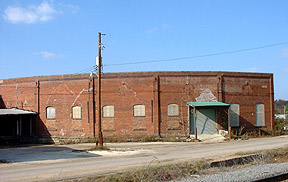
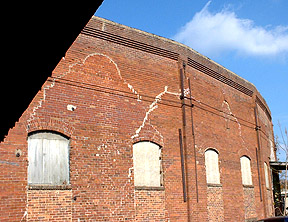
The opening of the Little Rock, Hot Springs & Western Railroad in April 1900 provided more direct access to Hot Springs from Little Rock and the north. Both the Choctaw, Oklahoma & Gulf and the Iron Mountain took advantage of this route, effectively cutting the volume of interchange traffic moving over the Hot Springs Railroad. However, when Gould/Iron Mountain interests were successful in purchasing the LR&HSW in the spring of 1901, the Choctaw was forced to develop another route into Hot Springs.
At about the same time, the Hot Springs Railroad was sold by the heirs of Joseph Reynolds to St. Louis financier Joseph Dickson, who was acting on behalf of an undisclosed railroad. When the transaction was finalized, Dickson confirmed that he had purchased the Hot Springs Railroad for the Choctaw, Oklahoma & Gulf. On June 1, 1901, Choctaw president Frances I. Gowen succeeded Dickson as president of the Hot Springs Railroad.
In March 1901, one of the Malvern newspapers had noted that the shops were being repainted. It was not known at the time, but this would prove to be one of the last improvements made to the shops before they were closed. In mid-July, the Choctaw's inspection engine "Arapahoe" stopped in Malvern while officials inspected the Hot Springs Railroad shops. A newspaper reporter tried to interview Superintendent Harris about the rumored removal of the shops from Malvern, but the Superintendent declined to provide any specific information.
Malvern leaders were concerned about the routing of the Choctaw's connecting line from Little Rock to a connection with the Hot Springs Railroad, recognizing that if the Choctaw chose the most direct route, the primary Little Rock-Hot Springs service would bypass Malvern. The Choctaw began surveying a route between Little Rock and Malvern, an action which pleased Malvern leaders but which in actuality was only a negotiating ploy to force the Iron Mountain to come to terms for the lease and eventual sale of the Little Rock (Hot Springs Junction) to Benton segment of the LR&HSW. This segment was duplicate trackage for the Iron Mountain, closely paralleling their existing mainline. A reasonable price was negotiated, thus providing the Choctaw with a route as far as Benton. Temporary operating rights were granted between Benton and Hot Springs while the Choctaw worked to bridge the gap between their two lines.
On September 29, 1901, the CO&G assumed operation of the former LR&HSW between Little Rock (Hot Springs Junction) and Benton (Iron Mountain crossing), and also began utilizing trackage rights to operate their own trains over the LR&HSW between Benton and Hot Springs. This arrangement essentially duplicated the LR&HSW's previous Little Rock-Hot Springs passenger train operations. Hot Springs Railroad (now a Choctaw subsidiary) passenger service between Malvern and Hot Springs continued as before, but all of the traffic from the north and east now traveled via Benton rather than changing at Malvern. With this traffic shift, all Malvern shop positions were reassigned to Hot Springs. Malvern's newspaper editor warned that, "If the shop closure is true, it will be a decided setback for Malvern, and constitutes a matter of such vital importance to the business interests of town as to require immediate attention from the board of trade."
It was necessary for the Choctaw to construct new trackage from Benton to a connection with the existing Hot Springs Railroad. Seventeen miles of new track were built between November 1901 and May 1902, extending west through Haskell to Butterfield, a Hot Springs Railroad station located 5 miles north of Malvern. Just as Malvern leaders feared, this arrangement placed Malvern at the end of a branch line instead of being the important junction point of earlier years. This new connecting track was opened for passenger train service on May 13,1902, and all Choctaw passenger trains were routed off the LR&HSW line (Benton-Lonsdale-Hot Springs) and onto the new line which utilized the former Hot Springs Railroad between Butterfield and Hot Springs. For the first five months (until October 26, 1902), passenger train shuttle service was provided between Malvern and Butterfield to meet all trains, with Malvern to Hot Springs passengers changing trains at Butterfield. Existing traffic failed to justify the shuttle service, and after October 26, only a single mixed train operated between Malvern, Butterfield and Hot Springs, effectively converting the Malvern-Rockport-Butterfield segment of the old Hot Springs Railroad to branch line status, at least from the perspective of the Choctaw.

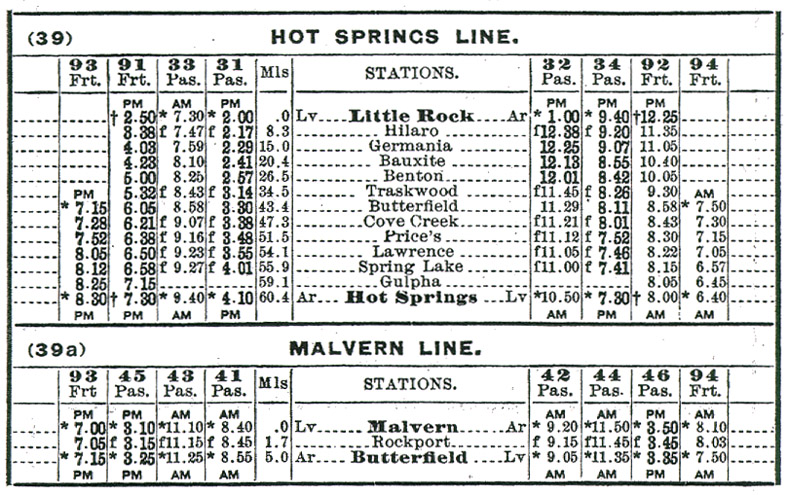 Click image to enlarge. |
 Click image to enlarge. |
Malvern was unsuccessful in retaining the shops, and in October 1902 the Malvern Meteor reported the start of demolition of the shop buildings. "The tearing down of the Hot Springs Railroad car sheds and other buildings here and taking up the switches leading to them looks bad, and has the appearance of almost sacrilege. Since the company has removed their shops to another point and is determined not to make further use of these buildings, they are pursuing the proper course in tearing them down and using the material elsewhere. This is better than allowing them to stand there and rot down, for there is nothing that looks worse of has a more damaging effect on a town than a number of vacant buildings of this character."
The roundhouse might have continued in limited use for a few more months, but its railroad service was also ending. The 1904 Sanborn Fire Insurance map indicated that tracks and turntable were still in place, but that the building was no longer in use. By 1908, tracks had been removed, and the former roundhouse had become a warehouse for the Rockwell Manufacturing Company, a manufacturer of screen doors, window screens and window frames.

Thus began a variety of non-railroad uses for the former roundhouse. By 1913, the Rockwell plant had become the Arkansas Short Leaf Door Company, and the roundhouse, although vacant again, was part of this complex. The adjacent plant area was operated by McCormick Lumber & Supply in 1920, and the roundhouse building was used by Wholesale Feed and Grain. Ten years later, McCormick was still in operation, but the roundhouse had become a grocery warehouse for the American Company of Arkansas. By 1947, Clem Mill and Gin Company had constructed a new structure just west of the roundhouse, but the roundhouse continued as a warehouse for Wholesale Feed and Flour. Later, Clem Wholesale Grocery Company used the roundhouse before it was acquired by its present owner, Hardy's Insulation. Surprisingly, none of the users over the years made any major alterations to the brick structure itself -- the building still looks like a roundhouse.
The Iron Mountain freight and passenger stations at Malvern, both located on the north side of the StLIM&S mainline, served as a joint station with the Choctaw and later the Rock Island. In the case of the passenger station, Rock Island paid a proportion of the maintenance and operation on the basis of tickets sold. With the freight station, the proportion of maintenance and operation costs were based on the proportion of LCL tonnage handled by each line. In 1916 the Iron Mountain passenger station was replaced by a newer brick structure located on the south side of the mainline, but the freight station continued to be sandwiched between the MP and Rock Island tracks. By 1947, Rock Island had built a small brick freight station and train order office along the east leg of the wye track at Malvern. This building apparently replaced an earlier train order office as well as ending the joint freight station arrangement.
Even after the closure of the Malvern roundhouse, a servicing facility was maintained at Malvern, with an engine watchman on duty to handle minor servicing details for locomotives which tied up at Malvern. In steam days, the facilities included fuel (coal, then later oil), water (supplied by the Missouri Pacific at a rate of $0.114 per thousand gallons), and sand. A wye track was maintained to turn locomotives, and servicing facilities were grouped generally around the wye, north and east of the former roundhouse.
Steam fueling and servicing facilities were replaced by a 20,000 gallon diesel fuel tank in 1952, as the railroad dieselized outlying points. For a number of years, the engine watchman at Malvern was Tom Foster, whose Rock Island seniority began on September 1, 1920. Locomotive servicing at Malvern ended in 1965, when Tom Foster's position as the last engine watchman was abolished at the close of duty, August 31, 1965. In the following month, the diesel fueling and sanding facilities at Malvern were retired. After his retirement, Foster authored a book Forty-five Years on the Rock Island Line which was published in 1974.

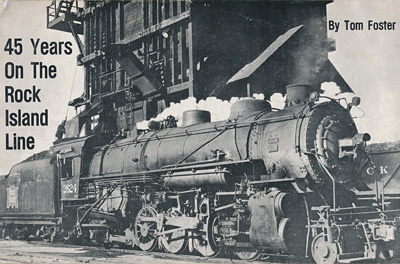
Late in 1976, Tom Foster became a local celebrity when the Rock Island "secretly" brought a shiny new GP38-2 diesel, number 4348, to Malvern to reveal its name...Tom Foster, in a special celebration which was "typical Rock Island" in many ways.

Diamond Jo Reynolds, founder of the famed Diamond Jo Steamboat Line, was one of the most colorful rivermen on the Mississippi River. He was born in New York in 1819, but moved to Chicago by the 1850s. Characterized by his contemporaries as a "born trader", Jo Reynolds entered the steam boat trade with one boat, the Lansing, in 1862. Recognizing the potential for the bulk shipment of grain, Reynolds became the leading grain shipper on the Upper Mississippi, and by 1873 his fleet consisted of five boats and twenty barges.
In the 1870s, one of the Diamond Jo steamers was named Arkansas, an unlikely name for an upper Mississippi River company, but a name which hinted at Reyonld's other interest, the Hot Springs Railroad. Reynolds had endured stagecoach rides to Hot Springs, in order to treat his rheumatism and arthritis with the "healing waters." The stagecoach rides were less than satisfactory, and in 1875 Reynolds began building the Hot Springs Railroad, extending north from Malvern Junction, a station on the Cairo & Fulton, to Hot Springs. The arrival of the railroad in Hot Springs dramatically increased the business of the growing spa, thanks to the much improved access.
The Diamond Jo steamboat line turned to the passenger and freight business in the 1880's after the railroads began carrying most grain shipments, and within a decade the company came to dominate the packet trade between St. Louis and St. Paul. Diamond Jo Line Steamers such as the Mary Morton, Dubuque (IV), St. Paul, and Quincy plied the Upper Mississippi until 1911, surviving cut-throat competition from other lines and opposition from the railroads to become the last regular operating packet line between St. Louis and St. Paul.
Joseph Reynolds began to acquire interests in copper mining in Arizona during the 1880s. He died in 1891, in a mine shack while in Arizona overseeing one of his mines. Many of the contemporary newspaper accounts referred to Reynolds as both "Diamond Joe" and "Diamond Jo." Based on company printed materials of that era, "Diamond Jo" is the correct spelling.

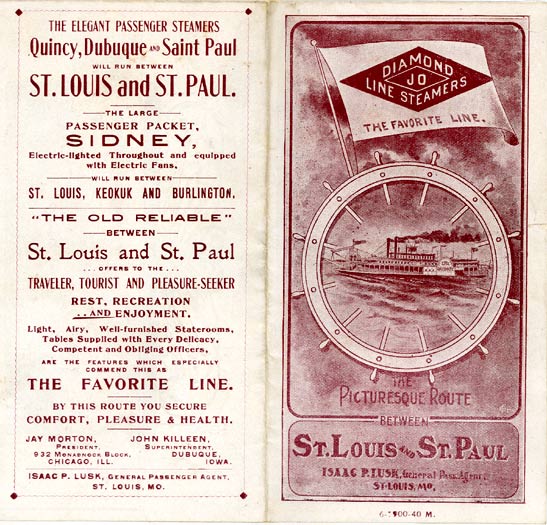
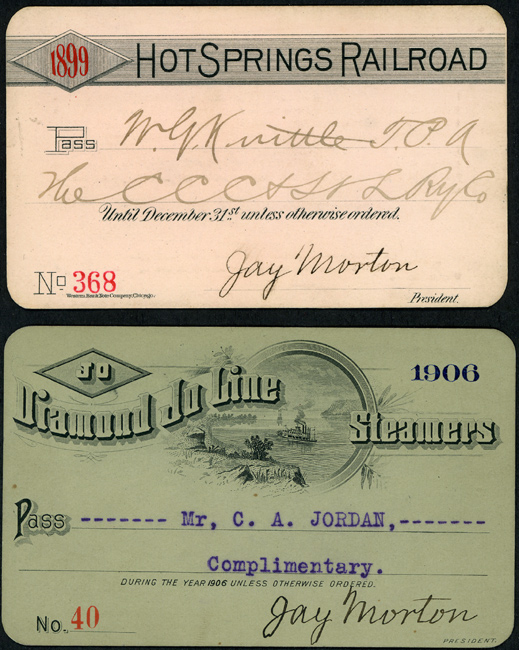
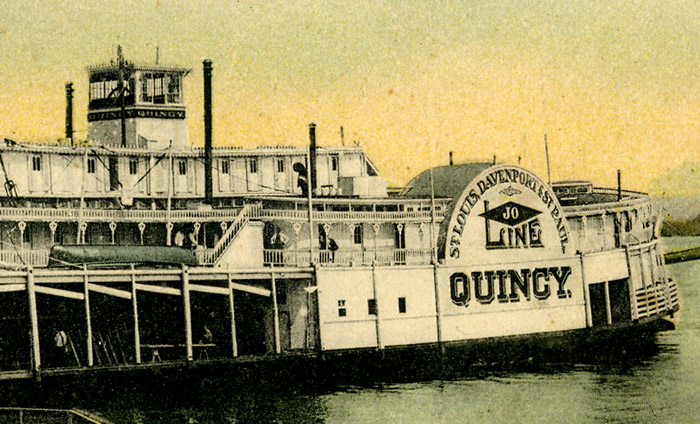
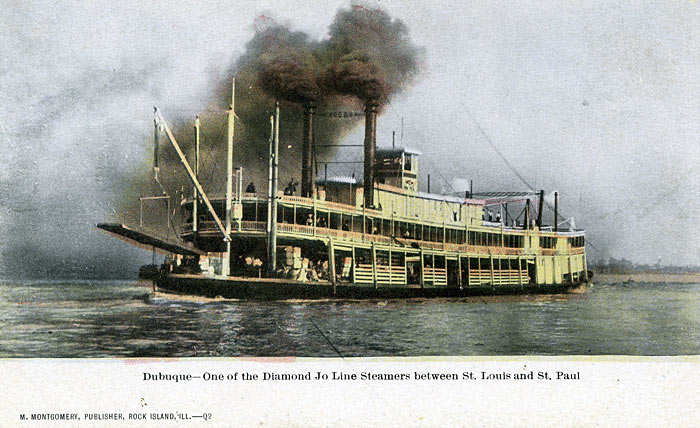
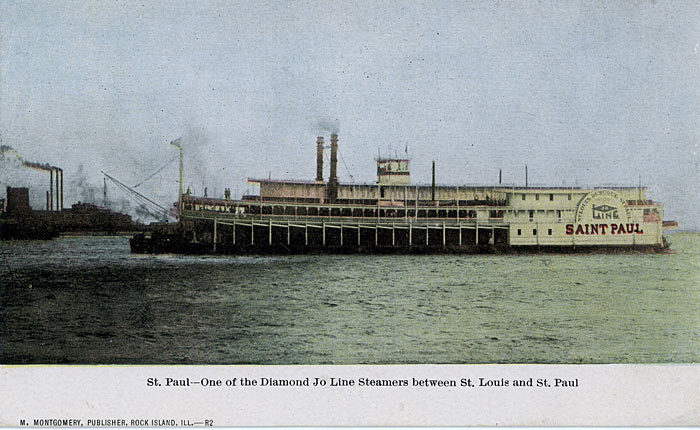
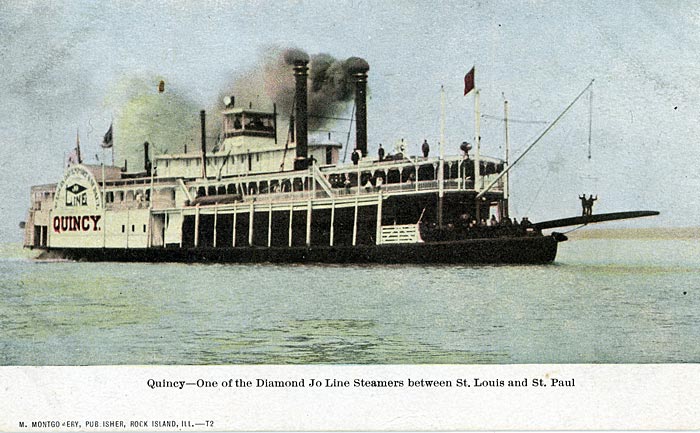
Amtrak Texas Eagle - Malvern Station
Arkansas Historic Preservation - Malvern Roundhouse
Searchable Directory of Railroad Websites